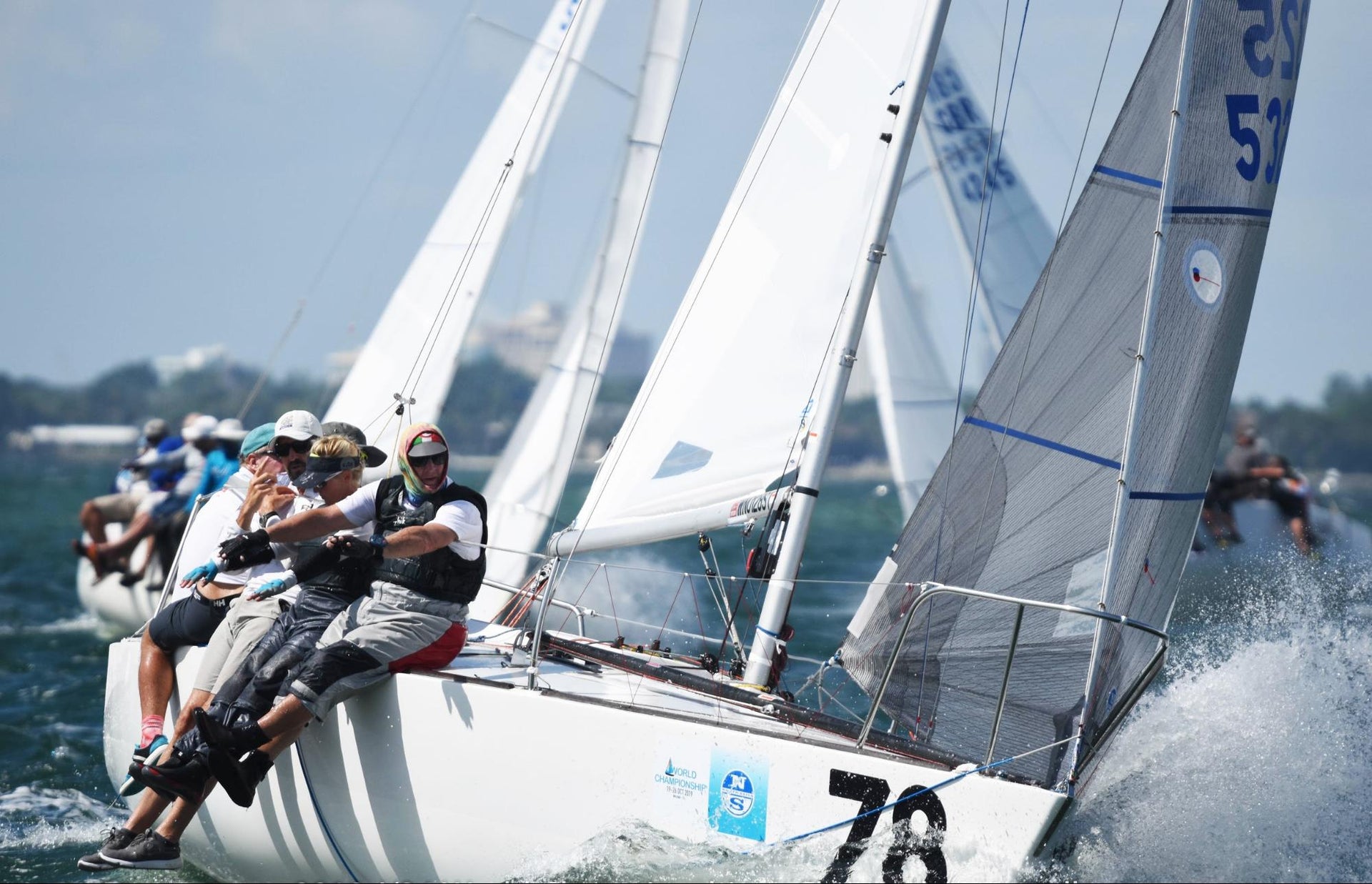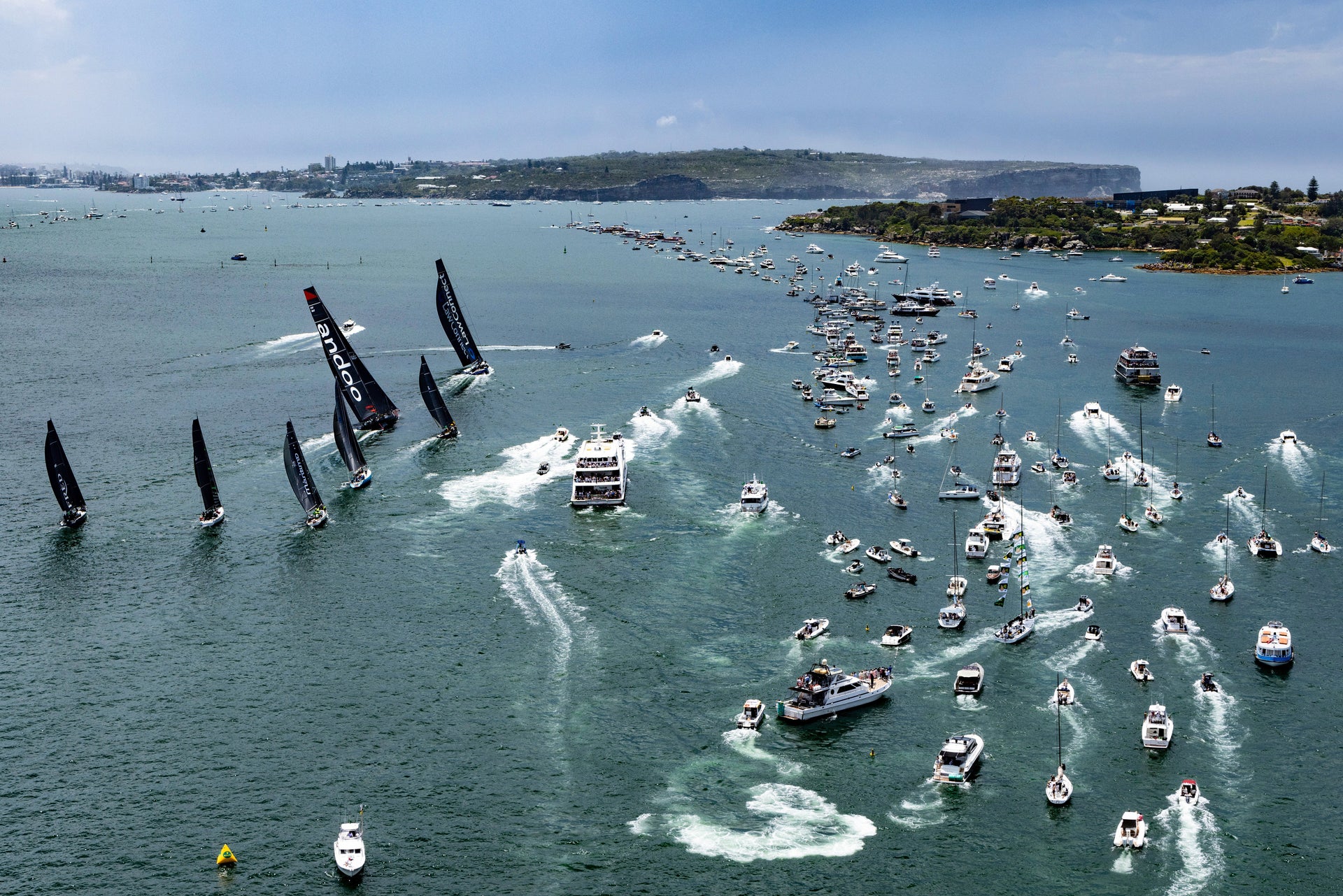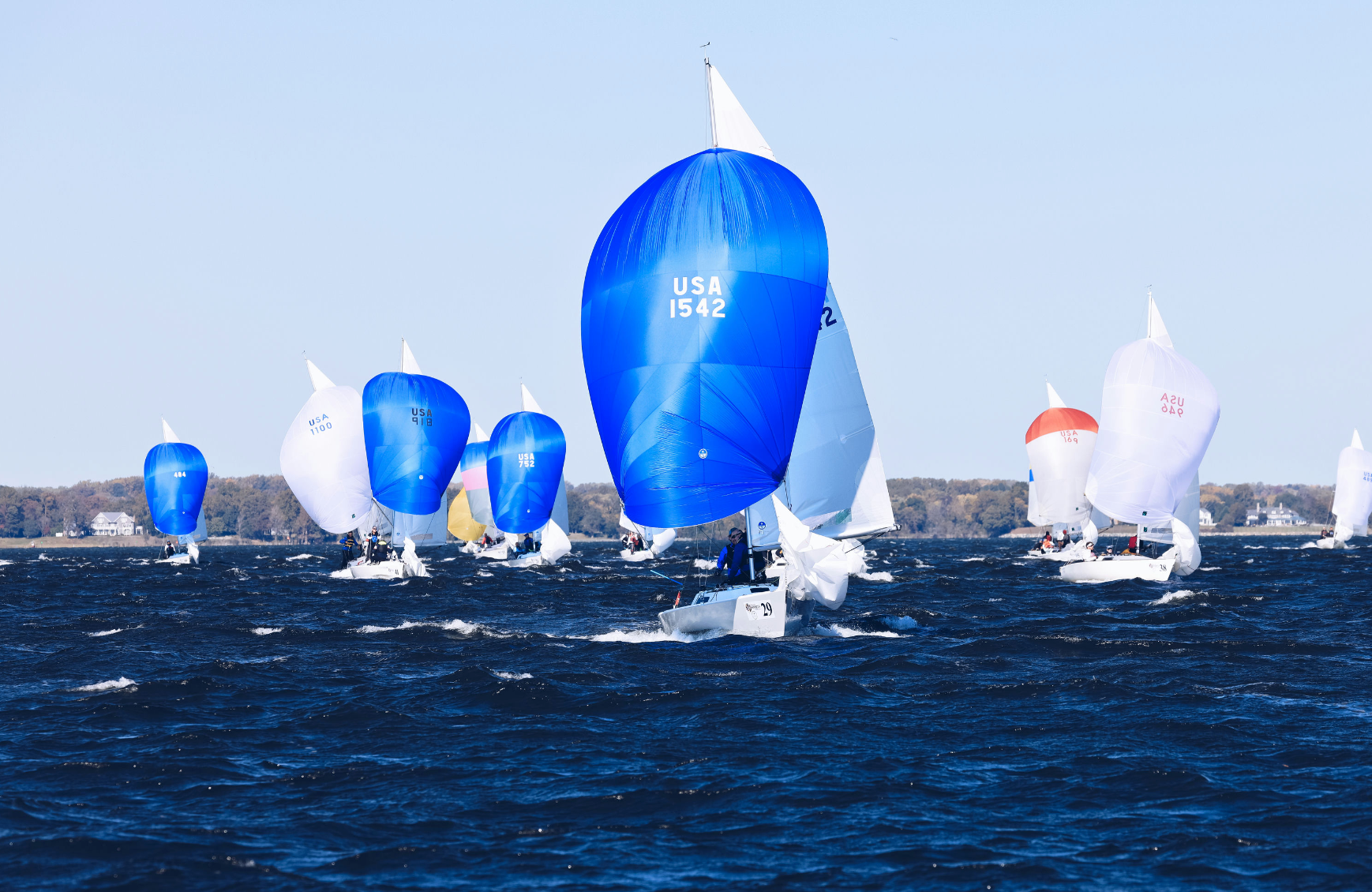J/24 WORLDS: EXPERTS TAKEAWAYS
J/24 WORLDS: EXPERTS TAKEAWAYS
North Sails Experts Share Key Tips

An incredible and talented fleet of 79 teams competed in the 2019 J/24 World Championship held in Miami, Florida for the first time ever. Such a bucket list venue attracted teams from nineteen different countries, and Miami delivered a variety of conditions. After the windy days, the sail care team from North Sails Fort Lauderdale jumped right on repairs to make sure no team was held back.
North Sails clients swept the podium, and eight out of the top ten boats used full North inventories. Congratulations to 2019 World champions Keith Whittemore, Shelby Milne, Willem Van Waay, Mark Rodgers and Brian Thomas on Team Furio, powered by the North Fat Head mainsail, SD-TH genoa, SRB jib and the FR-2 spinnaker.
North Sails experts raced on several boats. Here are some of their takeaways.
Find the Favored End and Start There
Sailing in a large fleet, the starting line is much longer than it would be with a typical 20-40 boat fleet. That means starting at the favored end gives you a big head start against boats that start at the non-favored end. In a smaller fleet there’s less leverage on the starting line, so giving up the favored end in exchange for low density can be a smart play. But Miami featured two distinct starting lines connected by a mid-line boat, and it was imperative to know which end of the line was favored and then try to start near it.
There are several ways to check which end of the line is favored, but the simplest is to use your compass. North expert Zeke Horowitz walks us through his approach:
- Compare the wind direction the RC has posted to your own head-to-wind shots and make sure they are similar.
- Start at one end of the line with your boat right on the line, and sail straight at the other end of the line.
- Triple check to make sure you are perfectly parallel with the line, then note your compass heading. On starboard, your compass heading should be 90 degrees less than the course axis. (On port, this heading should be 90 degrees more than the course axis.) On starboard tack, if your line heading is only 80 degrees less than the course axis, the pin end is 10 degrees favored. That might not sound like much, but when the starting line is almost a quarter of a mile long, that head start is often insurmountable.

Work to a Side
In an 80-boat fleet, it is next to impossible to get clear air if you have a bad start or end up on the wrong side of the course. So when that happens, how do you get clear as fast as possible? Mike Marshall, who helped Velocidad finish 3rd overall, advises staying out of the middle and letting your boat speed work for you. “With such a huge fleet of boats there is little to no wind in the middle of the course, so you have to get yourself out to a side (without ending up in the corner). If you are in the top group on your side, chances are you will be in the top 20 at the first mark. From there, you can pass boats on the next four legs.”
Too Much Backstay
The J/24 likes a very tightly sheeted main to balance the lee helm from the genoa. If you use too much backstay in big breeze, you can’t get the leech of the main tight enough because the main is too flat. The boat goes faster forward, but loses height in the process. Unfortunately, once up to speed, the J24 doesn’t gain by going faster—all the gains are with height.
“We paid particular attention to backstay tension and how flat it was making the main,” Mike explains. “We were aiming to have just the start of overbend wrinkles coming off the mast, going back to the clew. By doing this, we were able to hold our lane while maintaining speed. We found that easing or trimming the backstay just an inch made a huge difference in the mode that the boat was in.”

Push the Tiller
Bonus tip from Mike: “I can’t say this one enough—the J/24 genoa wants to pull the bow down all the time, especially when the main is eased in a puff. That means the driver must push the bow up with the tiller. Bow-down mode isn’t any faster, it’s just a loss in height. Push the boat upwind, all the time.”
For lots more expert tips, visit the J/24 Class page.





























